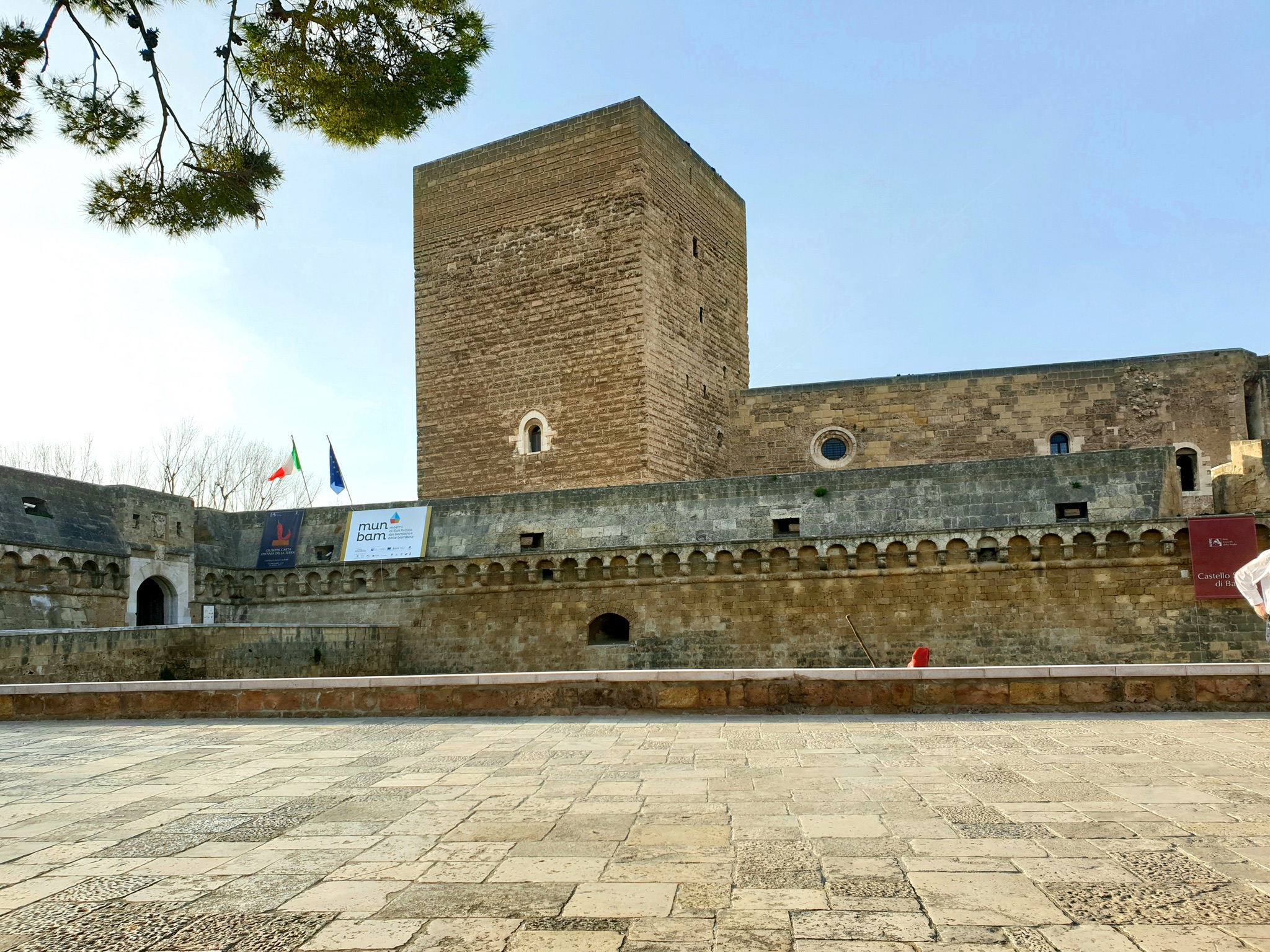Bari
What to do
Bari is a city with a dynamic and active soul, where modernity and tradition combine to create an enchanting atmosphere. Known as the “Gateway to the East” thanks to its long tradition of trade, its territory is rich in tradition. Strolling through the alleys and streets, one can sense the history. Its waterfront, one of the greatest in Italy, offers a spectacular view of the Adriatic Sea.
CASTELLO NORMANNO SVEVO

Castello Normanno Svevo is a symbol of Bari, located in the old town. This majestic building is a testament to the Swabian-Norman tradition in the region. Commissioned by Emperor Frederick II in the 13th century and built on the remains of a Norman fortress, it was transformed several times until it became the seat of an elegant Renaissance court ruled by two women, mother and daughter: Isabella of Aragon and Bona Sforza. The castle has become a museum, and the archaeological collections tell the story of the city, offering a unique perspective on the dynasties that ruled the city.
THE BASILICA OF ST. NICHOLAS

The Basilica of St. Nicholas is a place rich in history, art and sanctity. Located in the old town of Bari, its history and architecture make it an absolute must-see. Architecturally, the Basilica is one of the most important examples of Apulian Romanesque architecture. Its construction is linked to the abduction of the relics of St. Nicholas from Myra, Turkey. The building, constructed on the residence of the Byzantine Greek governor of Southern Italy, incorporates elements and materials of the earlier construction. The facade, with its tripartite structure, is decorated with bas-reliefs, while the interior is decorated with large oil paintings depicting the life of St. Nicholas.
(Fonte immagine: Elio Pallard, CC BY-SA 4.0
THE PETRUZZELLI THEATER

The Petruzzelli Theater is a building constructed around 1903 by the Petruzzelli family. The fourth largest theater in Italy, it is distinguished for its great variety in programming. Cozy and singularly beautiful, its interior decorations are entirely made of pure gold. The main facade features an elegant staircase, Corinthian columns, statues and detailed decorations, reflecting the majesty of the Theater. Many tenors, singers and conductors graced the stage. After its destruction in 1991, it resumed its activity in 2009. The Theater is a symbol of resilience, returned to its former glory.
(Fonte immagine: D.belfiore, CC BY-SA 4.0

